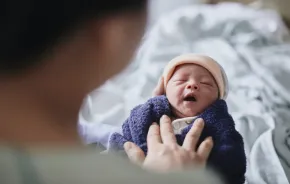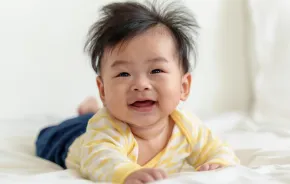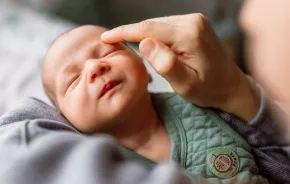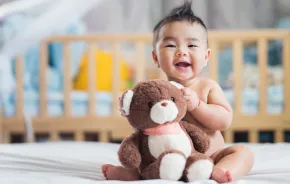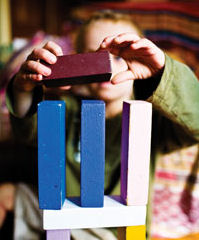 Plato said you can discover more about a person in an hour of play than in a year of conversation. The same can be said of the way young children learn.
Plato said you can discover more about a person in an hour of play than in a year of conversation. The same can be said of the way young children learn.
What looks like a simple activity to an adult — stacking blocks and knocking them down or running cars around an imaginary track — is actually serious developmental work to a child. By choosing the right kinds of toys, parents can make the most of playtime.
But that’s easier said than done. Store shelves are lined with fancy electronics and brightly colored gadgets that promise to make your baby the next Einstein. It’s enough to make you slightly dizzy, if not downright confused.
Keep it simple
It turns out that the best toys for little ones are often the simplest. Toys that allow children to direct the play themselves — open-ended play — are not only more engaging for young children, they’re also important for development.
So what exactly are open-ended toys? “My definition is toys that foster children’s imagination, that have the potential to be different every time they play with them,” says Dr. Dimitri Christakis, professor of pediatrics at Seattle Children’s Hospital Research Institute and the University of Washington.
Dr. Christakis says that parents should trust their judgment when looking for toys that encourage open-ended play. “Parental instincts are good,” says Christakis. “The kinds of toys that children have played with for millennia are probably the best. There is a reason those toys have longevity.”
“The reason those toys are so good for play and learning is that they require a lot more thinking and creativity on the part of the child,” says Claire Lerner, director of parenting resources for the children’s advocacy group Zero to Three. “Other toys might teach cause and effect, but with open-ended play, ideally, they are using all their domains of development.” Puzzles, for example, work motor skills, problem-solving abilities and language skills as the child talks through the process with an adult.
What to look for
Building blocks
Simple blocks in all shapes and sizes are a perpetual hit with child development experts. “Kids will start by stacking them and build visual-spatial skills, and then they learn problem solving,” says Lerner. She adds, “It expands to using their imagination, and the blocks they’re stacking in year one become a house for the stuffed animals in year two, a garage for cars, a hospital for their dolls.”
Dr. Christakis agrees. He recently conducted a study that found that when children are playing with blocks they are strengthening their thinking and language skills. “Playing with blocks gives you an opportunity to reinforce language,” says Christakis. “The next time the child is doing it on their own, they are in fact practicing what they’ve learned, internally. They’re able to experiment in new ways.”
Because the ways in which children can play with blocks change as they grow, blocks make sense economically, too. Any parent who has tossed out a toy that their children grew bored with after a week can appreciate that. Of course, you don’t have to limit yourself to wooden blocks. Children can build (and stack and sort and count) with empty containers, large cardboard blocks or even pillows!
Let’s pretend
Toys that reflect the world around them can provide hours of fun for young children. Pretend food and kitchen tools can turn your living room into a restaurant, create a picnic for dolls or allow your child to “make dinner” alongside you. A child can talk on a toy phone to imaginary friends, or make change with a toy cash register. Costumes and dress-up clothes are another excellent choice.
“Anything that lends itself to imagination and creativity can lead to making up stories with a beginning, middle and end,” says Lerner. That encourages language development, teaches children to work with others and develops creativity at playtime.
Arts and crafts
According to Lerner, art lends itself to the development of a wide range of skills, and even very young children aren’t necessarily too young for art supplies. “There’s so much room for imagination,” she says.
The trick is to keep the materials age-appropriate. Let your child finger-paint with pudding or yogurt and use nontoxic clay dough for sculpting. “With clay they’re working the same muscles that will help them write one day,” says Lerner. Washable markers are also fine for toddlers, as long as you’re OK with the mess.
Parents can play, too
No matter what toys you choose, the best way to foster your children’s development is to be an active participant in their play. Help your children discover new ways to use and experiment with their toys. “Anything can be made more open-ended,” says Dr. Christakis. “The boundaries get blurred depending on how the child interacts with it.”
Jennifer Donahue is a freelance writer who lives in Kenmore. Her 9- and 6-year-old sons still play with their beloved wooden blocks, which were passed down by a neighbor.






